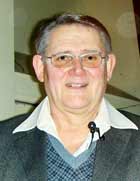
Vesuvius Bay has a special part in the history of Salt Spring Island.
On Wednesday February 10, the Salt Spring Island Historical Society is pleased to present the very interesting story of Vesuvius Bay as told by Marshall Heinekey. Marshall was born and raised on Salt Spring, and through the 40s and 50s lived in Vesuvius, where three generations of his family have been for the last 90 years. Marshall is a toastmaster, and has recently moved back to his family's old homestead.

This fascinating program will include a PowerPoint presentation with photos and data from 1860 to the present. The talk will trace the early establishment of the Vesuvius Settlement through pre-emption, the conflicts and struggles within the settlement, and the emergence of the Bittancourt family. The role of the Sandstone Quarry in building Victoria will be explained.
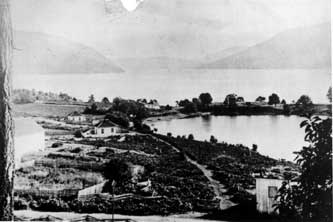

After WWI ,change came to Vesuvius, and the program will discuss the homesteading of the Inglis, the Chapman, and the Goodrich families. The presentation will focus on the growth of Vesuvius Bay including some of its buildings, churches and businesses. The final part of the presentation will highlight the presenter's experiences growing up in Vesuvius.
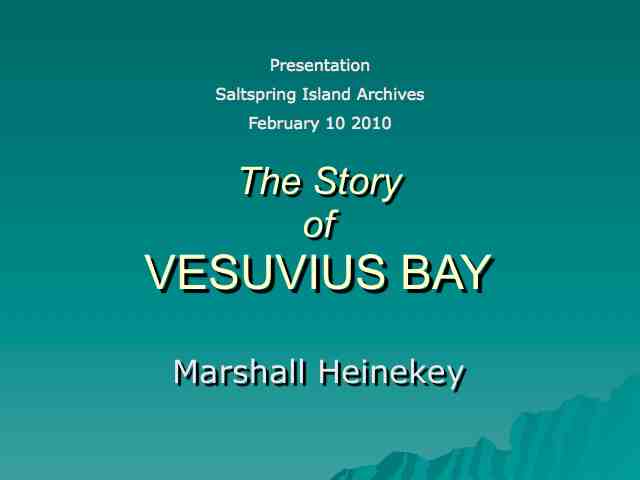 VesuviusBay.001.jpg
VesuviusBay.001.jpg
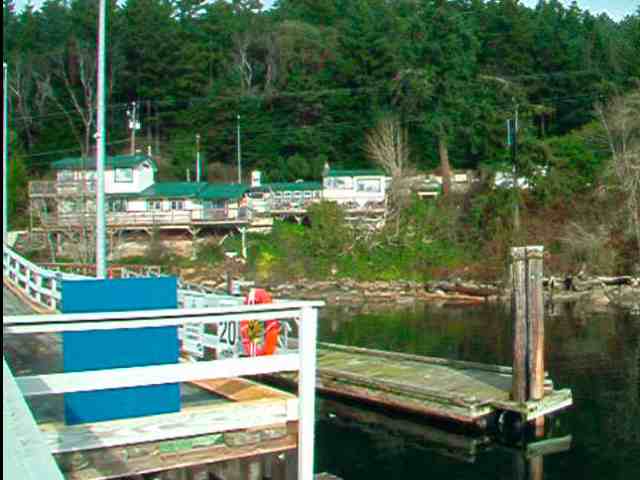 VesuviusBay.002.jpg
VesuviusBay.002.jpg
 VesuviusBay.003.jpg
VesuviusBay.003.jpg
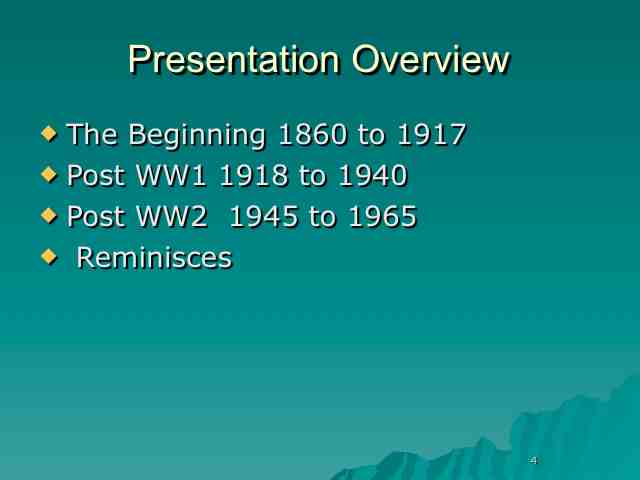 VesuviusBay.004.jpg
VesuviusBay.004.jpg
 VesuviusBay.005.jpg
VesuviusBay.005.jpg
 VesuviusBay.006.jpg
VesuviusBay.006.jpg
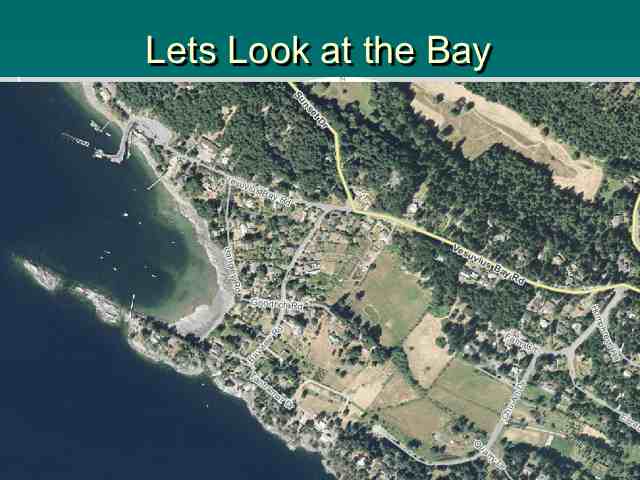 VesuviusBay.007.jpg
VesuviusBay.007.jpg
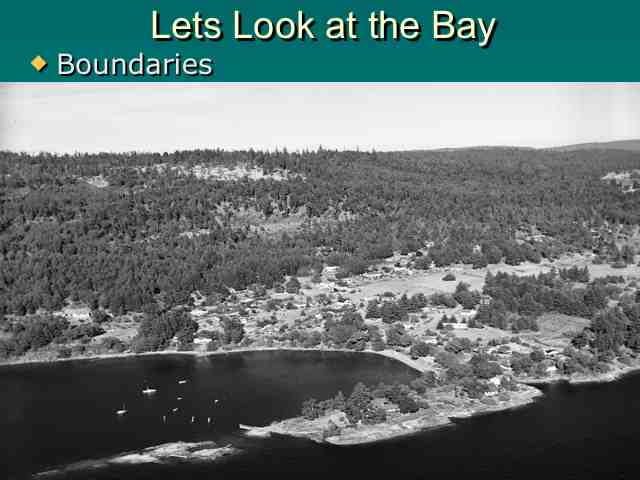 VesuviusBay.008.jpg
VesuviusBay.008.jpg
 VesuviusBay.009.jpg
VesuviusBay.009.jpg
 VesuviusBay.010.jpg
VesuviusBay.010.jpg
 VesuviusBay.011.jpg
VesuviusBay.011.jpg
 VesuviusBay.012.jpg
VesuviusBay.012.jpg
 VesuviusBay.013.jpg
VesuviusBay.013.jpg
 VesuviusBay.014.jpg
VesuviusBay.014.jpg
 VesuviusBay.015.jpg
VesuviusBay.015.jpg
 VesuviusBay.016.jpg
VesuviusBay.016.jpg
 VesuviusBay.017.jpg
VesuviusBay.017.jpg
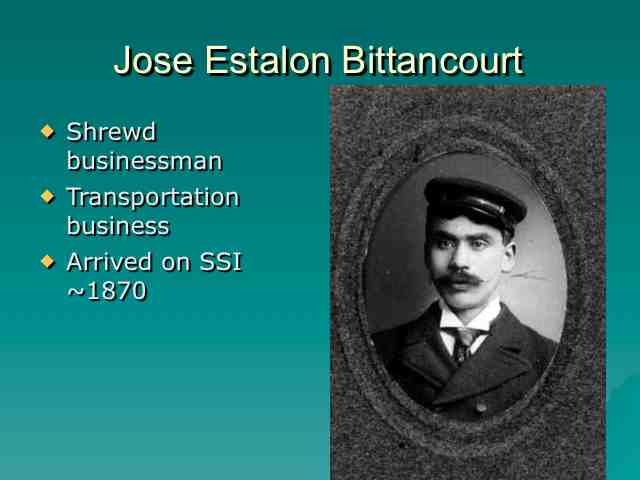 VesuviusBay.018.jpg
VesuviusBay.018.jpg
 VesuviusBay.019.jpg
VesuviusBay.019.jpg
 VesuviusBay.020.jpg
VesuviusBay.020.jpg
 VesuviusBay.021.jpg
VesuviusBay.021.jpg
 VesuviusBay.022.jpg
VesuviusBay.022.jpg
 VesuviusBay.023.jpg
VesuviusBay.023.jpg
 VesuviusBay.024.jpg
VesuviusBay.024.jpg
 VesuviusBay.025.jpg
VesuviusBay.025.jpg
 VesuviusBay.026.jpg
VesuviusBay.026.jpg
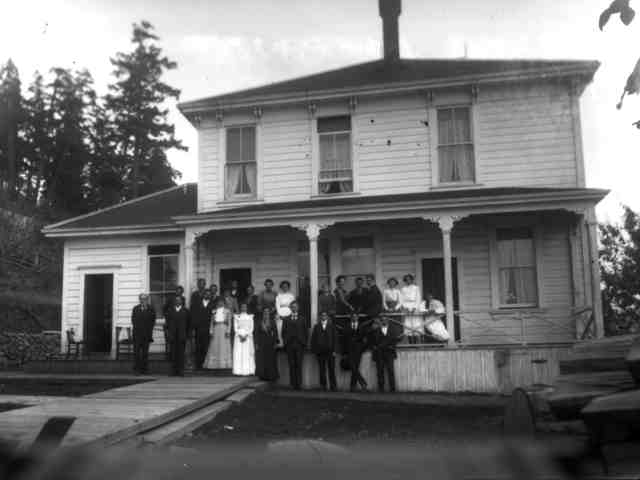 VesuviusBay.027.jpg
VesuviusBay.027.jpg
 VesuviusBay.028.jpg
VesuviusBay.028.jpg
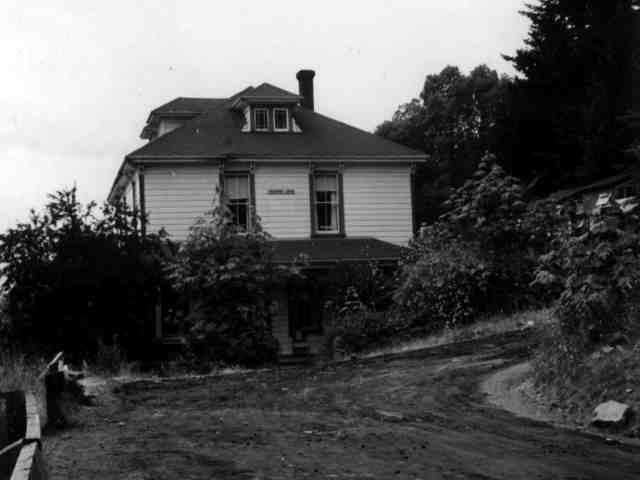 VesuviusBay.029.jpg
VesuviusBay.029.jpg
 VesuviusBay.030.jpg
VesuviusBay.030.jpg
 VesuviusBay.031.jpg
VesuviusBay.031.jpg
 VesuviusBay.032.jpg
VesuviusBay.032.jpg
 VesuviusBay.033.jpg
VesuviusBay.033.jpg
 VesuviusBay.034.jpg
VesuviusBay.034.jpg
 VesuviusBay.035.jpg
VesuviusBay.035.jpg
 VesuviusBay.036.jpg
VesuviusBay.036.jpg
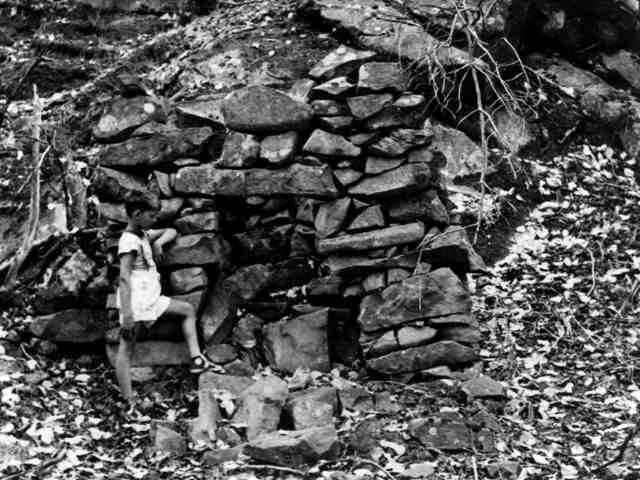 VesuviusBay.037.jpg
VesuviusBay.037.jpg
 VesuviusBay.038.jpg
VesuviusBay.038.jpg
 VesuviusBay.039.jpg
VesuviusBay.039.jpg
 VesuviusBay.040.jpg
VesuviusBay.040.jpg
 VesuviusBay.041.jpg
VesuviusBay.041.jpg
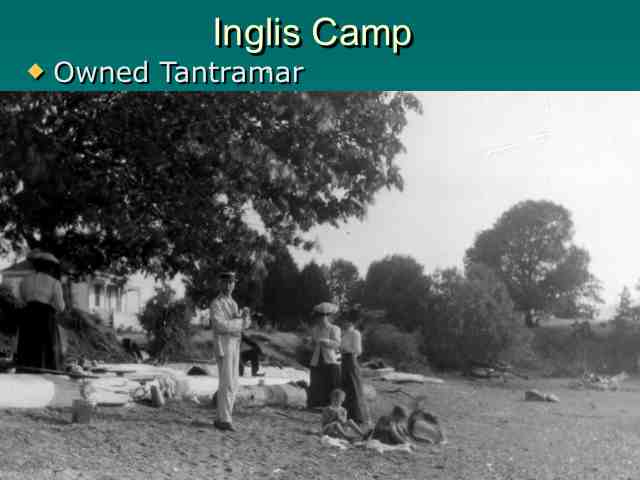 VesuviusBay.042.jpg
VesuviusBay.042.jpg
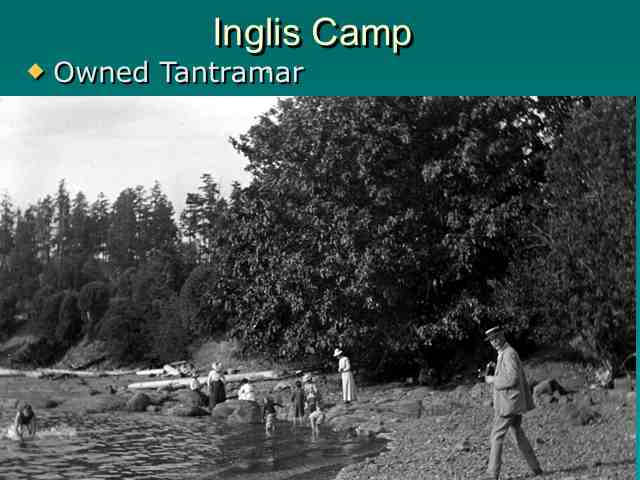 VesuviusBay.043.jpg
VesuviusBay.043.jpg
 VesuviusBay.044.jpg
VesuviusBay.044.jpg
 VesuviusBay.045.jpg
VesuviusBay.045.jpg
 VesuviusBay.046.jpg
VesuviusBay.046.jpg
 VesuviusBay.047.jpg
VesuviusBay.047.jpg
 VesuviusBay.048.jpg
VesuviusBay.048.jpg
 VesuviusBay.049.jpg
VesuviusBay.049.jpg
 VesuviusBay.050.jpg
VesuviusBay.050.jpg
 VesuviusBay.051.jpg
VesuviusBay.051.jpg
 VesuviusBay.052.jpg
VesuviusBay.052.jpg
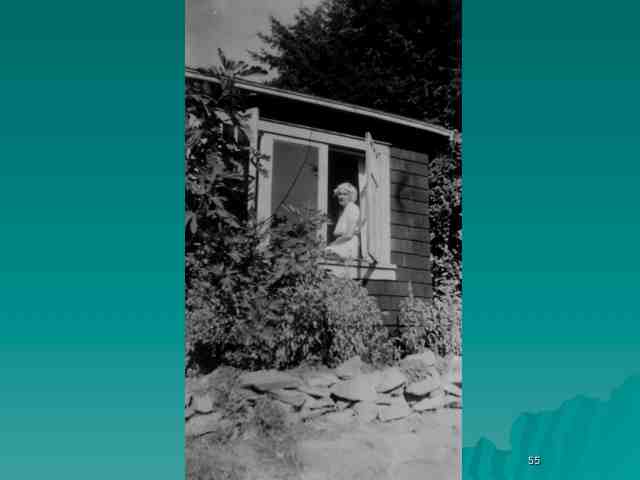 VesuviusBay.053.jpg
VesuviusBay.053.jpg
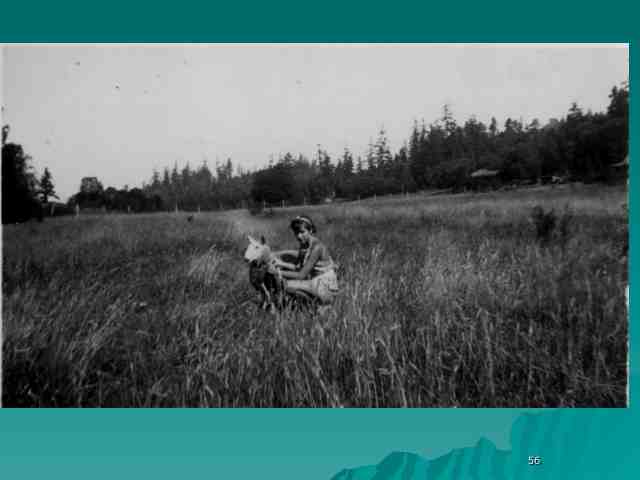 VesuviusBay.054.jpg
VesuviusBay.054.jpg
 VesuviusBay.055.jpg
VesuviusBay.055.jpg
 VesuviusBay.056.jpg
VesuviusBay.056.jpg
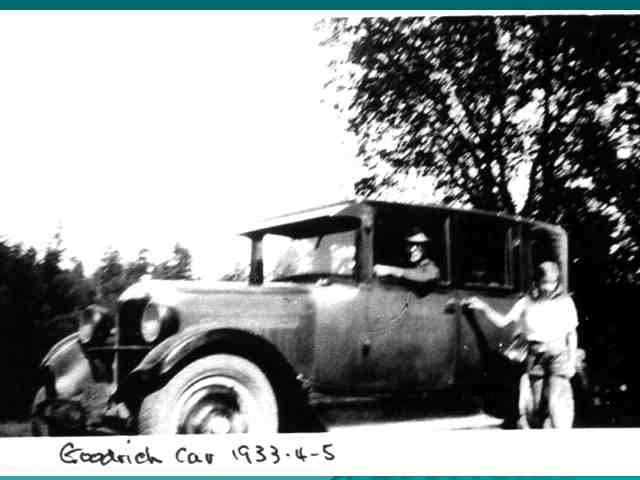 VesuviusBay.057.jpg
VesuviusBay.057.jpg
 VesuviusBay.058.jpg
VesuviusBay.058.jpg
 VesuviusBay.059.jpg
VesuviusBay.059.jpg
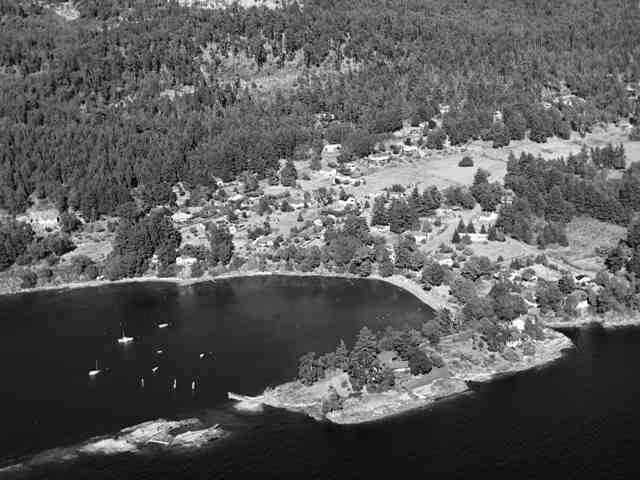 VesuviusBay.060.jpg
VesuviusBay.060.jpg
 VesuviusBay.061.jpg
VesuviusBay.061.jpg
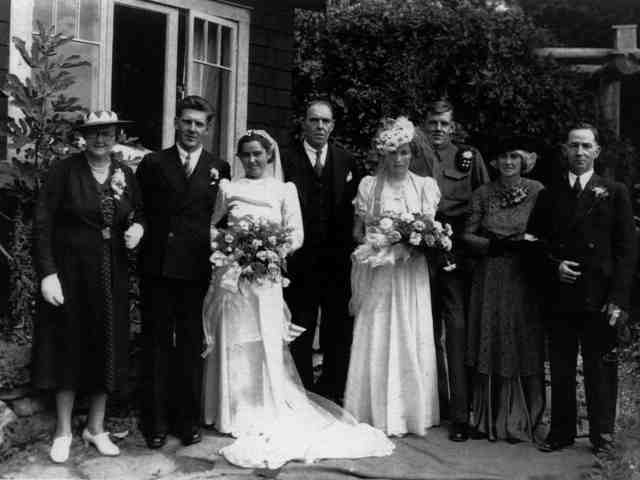 VesuviusBay.062.jpg
VesuviusBay.062.jpg
 VesuviusBay.063.jpg
VesuviusBay.063.jpg
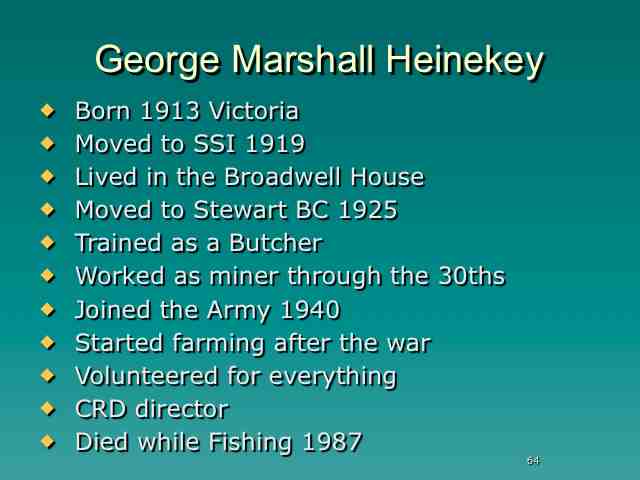 VesuviusBay.064.jpg
VesuviusBay.064.jpg
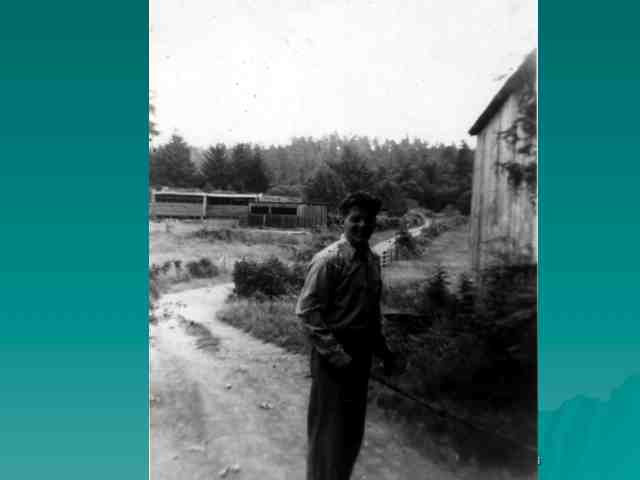 VesuviusBay.065.jpg
VesuviusBay.065.jpg
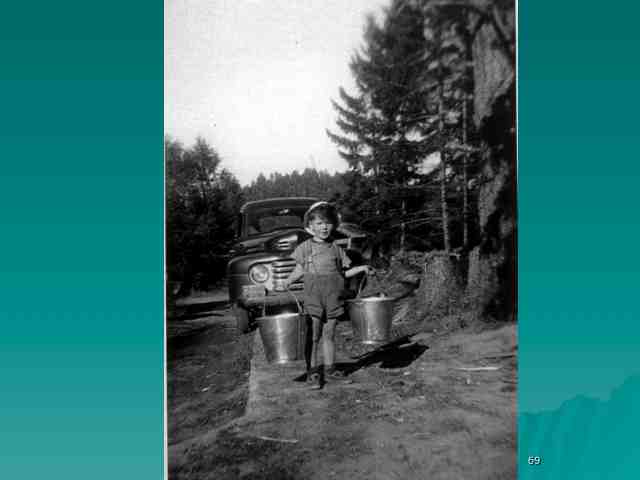 VesuviusBay.066.jpg
VesuviusBay.066.jpg
 VesuviusBay.067.jpg
VesuviusBay.067.jpg
 VesuviusBay.068.jpg
VesuviusBay.068.jpg
 VesuviusBay.069.jpg
VesuviusBay.069.jpg
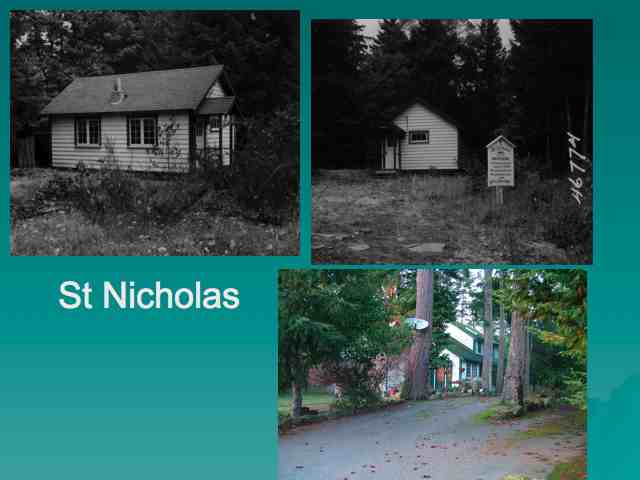 VesuviusBay.070.jpg
VesuviusBay.070.jpg
 VesuviusBay.071.jpg
VesuviusBay.071.jpg
 VesuviusBay.072.jpg
VesuviusBay.072.jpg
 VesuviusBay.073.jpg
VesuviusBay.073.jpg
 VesuviusBay.074.jpg
VesuviusBay.074.jpg
 VesuviusBay.075.jpg
VesuviusBay.075.jpg
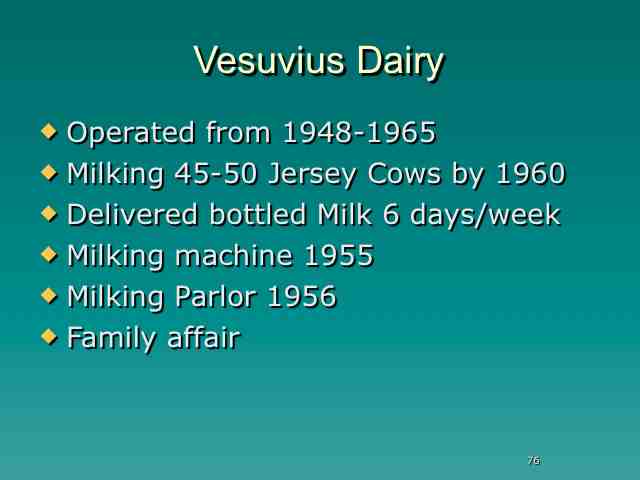 VesuviusBay.076.jpg
VesuviusBay.076.jpg
 VesuviusBay.077.jpg
VesuviusBay.077.jpg
 VesuviusBay.078.jpg
VesuviusBay.078.jpg
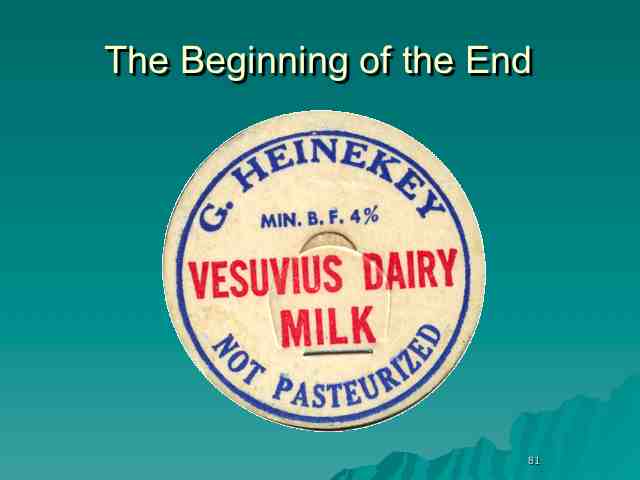 VesuviusBay.079.jpg
VesuviusBay.079.jpg
 VesuviusBay.080.jpg
VesuviusBay.080.jpg
 VesuviusBay.081.jpg
VesuviusBay.081.jpg
 VesuviusBay.082.jpg
VesuviusBay.082.jpg
 VesuviusBay.083.jpg
VesuviusBay.083.jpg
| Accession Number | Interviewer | Address to the Historical Society | |
| Date | February 10, 2010 | Location | Central Hall |
| Media | Audio CD | ||
| ID | 202 | Duration |
202_Heinekey-Marshall_Vesuvius.mp3
otter.ai
11.03.2023
no
Unknown Speaker 0:00
If you find it entertaining, interesting, educational, and most of all provocative, and the next time you go into the service, you can look around and see some of the things in a different light. Before I start this talk, I wanted to just set the stage. I want to set the stage of what was happening in 1859. No community starts, just people just jump in canoe or something, right, and start a whole community. It's starts because of the external things that are happening around us. So just think back 1859 I know many of you weren't around them. But here's a couple of key things. First of all, BC was not a province, Canada was in Canada. The 1949 Gold Rush in the States was over the night 1851 in the caribou was just beginning. There was a pig war starting out as well here Pig War, I see blank faces anyway, you'll get a taste of the Pig War. The other thing is, there was the states were starting to rumble about taking over parts of the seat. And the there's a dispute over the border and a few other things. And James Douglas was pointed the governor of Vancouver Island, that was the only thing that was Oregon was only 30,000, non natives of BC. And most of them are in the southern part. And then in 1859, he was made governor of the colony of British Columbia, and the governor of Vancouver Island. So that's the setting that we were in. The other thing is that triggered a lot of the settlement on Saltspring was the potential of the American Civil War. And many of the afro Americans were starting to move away knowing that this was coming and starting to look for safe haven. So that's where we're at. So I've broken this talk into just a couple of sections. First of all, I know I kind of talked about this fast history is based on facts. But I found out when I did this the first time, because the whole facts can be also interpretation of the facts. Everybody has a different interpretation. That doesn't mean that it's not true. But it makes it hard researching. Then there's fictional stories or a set in a factual context. And so that usually brings some spice to the air and doesn't distort the facts too much. But you get a different impression. And my favorite is folklore. And I started off on Saltspring. Living on folklore, few facts, my mother actually used to say, Never let the facts get into the way of a good story. And when I had kids, my daughter said to me when they didn't you know, hear that story about that grandma was talking about, I said, Why heard that version. So that's what I left Seattle with was a full part of the series. So presentation, we're going to begin with a time post World War One down to 1859. And then I was pre war, post war, a first world war, and then occasionally and then after the Second World War. And then I'm going to try and throw in a little bit of reminiscing as I go through the presentation. Okay, what's in a name? This is the first question that most of you have ever thought about. Saltspring is why is it constituted. So means warm water and one of the different dialects, there's about 10 names of First Nations gave to it. This one's the only one I can kind of pronounce that it stands for warm water, they all have to call the names and to do with the warm water. And for any of you that have spam there, you know it's true. It was named after the HMS Vesuvius. Now, when I went to research this after I went away, it was really funny. You're you've left the island, you think you've come from a big place, and you face sitting in Vancouver and you're at a party. And there's some people of the opposite sets you're interested in. And you have a discussion with them. And they say where are you from? I'm from as soon as as soon as you don't like a towel Where's where's And I suppose on Saltspring Island, well, what's the nearest town Ganges? I'll tell you one thing that's not a conversation of geography that you want to happen. We tried to move the conversation somewhere else. So Captain, Sharon Osbourne, and most of you know that the ferrying crop lands, Osbourne Bay. And the names came with Captain Richards. When I first looked at I thought, it was kind of an egotistical guy that's born and bred HMS and her majesty's service ships. But actually, after I've studied him a little bit, he actually had a lot to do. Not just naming places, because most of the names from the coast actually come from him. You have two years to try and map some of the area. He was also the commissioner on the pegboard, me mentioned is talking on and that was actually an excellent choice, even though Canada lost people, in my view anyway. So he was a surveyor, he had a survey ship, and he traveled around here. And he spent most of his time in the southern Gulf Islands in that mapping, and things like that. And he had his boat was the HMS plumber, plumber. And it was newly commissioned at that time. And after that, he went on the Hekate, which was more more of a worship the last real British worship on the sacred mountain. Here's the full car. They asked me, How come it's called the SUV? Yes. I would just learn to spell it that time I was in my teens. He said, she said, why you see my secret? Well, there was a stallion called get the card. And he thought it reminded him it was home like I said, it's home like, well, you know, Pompeii Vesuvius. So don't ever question that totally told that story from these 10 years after I left home. And then then I find out that it's named after a ship the best bird folklore in history, but I actually liked the story about the atomic
Unknown Speaker 7:18
Okay, so finding a picture of HMS Vesuvius. There was three of them. One commissioned in 1814. Three master some wasn't that one. It was one commissioned in 1842. And I was hoping that wasn't the one. And then there was one I had lots of pictures commissioned in 1891, which was a police team, both so this one was named after the second one, which was a three master with a paddle wheel and was involved with the Korean War. And this is these two pictures hanging in a museum of a marine marine museum near Sussex in England. And the This is Captain Richards and this is quite I'm not sure if these are the crew of the Plunker. So I'm not sure whether they all fell together or not. But each one of these guys have something named after him within the Gulf Islands. kender Pinter ended up being the captain later and this is the surgeon have ceiling which I thought would be important
Unknown Speaker 8:39
okay, here's an 1961 picture of the bay it has changed a lot. So, from my perspective, this is the bait notice in the ads for your property to see a piece of property advertising to CVS haven't seen a science so you find it somewhere around Central somewhere around the Back Bay or something like that. So anyway, this is what I considered come true and drive on the highway, both sides that point and over to blij. That's my picture of Salzburg alright.
Unknown Speaker 9:31
seems to be going the wrong way. This isn't important. I want to really explain. Okay, this is the latest map by the CRD for the service. And this piece that's outlined in here is my family farm. Beyond that, that's not that important. What's important is that that represents 70 acres. Now there are six people that moved to Salt Springs, six families, each one of them given a minimum Have 100 acres, if that 70 acres, and I think that this is what the studious is in here, I would say that might be just under a half. And yet they considered a series of votes of 400 acres. So this piece of property, even though I never knew it when I was a kid, represented a big chunk of the island, somebody asked me a few minutes ago, all these lots in here is 53. Out of the family growing a four over here early history, pre emptive land was a critical thing. I knew nothing about it at the time. The mail service was important. It was one of the first mail services which as soon as the murders, or if there were several murders, but when Robin Robertson had a major impact on the island, and the bitten courts ruled the island in the late 1800s are ruled surrogates and the court. So let's talk about pre emptive land land acquisition system was encouraging individuals to settle in unsurveyed land and you got a picture. You've got a governor who doesn't have an engineering group, Royal Engineers helped them out a little bit. Not enough surveyors have enough people and you have these hordes coming in from the states heading for the caribou. And they would buy land, and then they would leave it. And he wanted the land on Southern Vancouver Island and the Gulf Islands in that region to be settled. And it was actually Jonathan bag, and his rabble rousers in Victoria at that time that lobbied the government to come up with a system of getting them the land, let them work on it, and then come along later. And if they managed it, okay, they could then spy it, off them. And that's what happened. So the terms were 100 acres for a single man. Women didn't count on these things. But a married man to get 200 acres. It had to be cleared, fenced work the land, build a dwelling. And if you're absent more than two months, this was critical on Neulasta. Or somebody else could preempt you so you could preempt it. This was a very successful at the very beginning. But in 1891, only 4% of the people that preempted land, either their in laws or cell phones, only 4%. So they cancelled it, because it wasn't working anymore. And everybody else that was rules they could do to get around the rules turn to start off pretty well, but not ended to a lot of friction. The first set like 15 No, there's this another thing I can tell you, I have more dates, thrown out. So called legal dates, and then trying to figure out exactly what went on. And when I think of half what has happened since I did this in 2010. All the data goes on the archives and other places and people use incorrect data to make to do their own research. And these things get carried over. So I'll try and tell you if I'm not sure of a date. So that that doesn't happen. But these are the people that came on there was Lewis Stark, Abraham Copeland, John Craven Jones, William Robertson, Howard s days. Howard was Lewis Clark's father and Moses McCaffrey, all African Americans all settled in the Vesuvius area, so there is 600 acres right there. So I have a feeling that is much like Quebec got a narrow strip, and it went right across to you got your 200 acres or 100 acres. So I think it probably went as far as a parent's link and mail service, big debate. Everybody has a different opinion on this thing. You just have to think of the coal mines that were going on, and that was becoming a major economic driver. So boats would travel up the inside, straight on the east and west side of Salt Springs, all the way up. And so people in the cities that could grow up to vote, knew it was going to come by at a certain time and get their mail. But it was actually officially you could get your mail in 1863. And there's a book out there that argues with me, because of some letters I read that had had to be Get closer to this date and feel feel lighter was the book that was commissioned and lived on the coast in 16 or 1862. So only a year before. Now, Jonathan bank, if everybody anybody wants to do a research project for this thing, do one on Jonathan. Lots of material. A prolific writer. If there was a political party would you probably belong to the Green Party, right. But he had a pretty good opinion of himself. And he bragged about what he could do. So he was at Bing settlement, which is now firmly the first year he planted 500 fruit trees the second year 5000 trees. So I don't think they're quite that many. But he decided when he was about 20, they needed a wife. So he wrote a letter to a friend of the states and says, I hear that Mrs. So and so's widow. She has two kids. I kind of liked her the last time I met her 10 years ago. Did you want to ask her if she'd be interested in moving up, I might even pay her with. Anyway, he wrote to the government saying that Bank settlements needed to have a regular stop. And that was in 1864. And in his letter, he said, I was sick and tired of planning over the mountains to get my mail studious, so they turned him down, and he waited another year before it happened. Now this one isn't in chronological order. This is typical. So this is the wharf is about 1891 nessa Jonan coming in and joining us to the south narrows area, stopping a cabbage and baby maple Bay Musgrave Croft and shininess lady Smith and all the way up to nine Saltspring and all the way back, and I made the round trip every second day. So you could get stuff coming south or north, mostly north. And it would stop and look. And there was variations of this before that. Okay, let's talk about the murders that really got place going. So an unknown African American was shot in 1867. In the quarry No, not the quarry that's part of our property. This is that stone cutters Bay on the northern part of Salt Springs. It was a quarry there as well. And it was started quite a bit earlier. There's two conflicting stories about how it started are supposed to be started in 1861, which is probably okay. But they also said the other cores are there and I don't believe that so 1861 firecracker started combining rock there, the Gold Rush was left it, other people came in and started mining rock. Technically speaking, it should really be two people dead. Because there was another fellow with this unknown guy. And they were seeing running and somebody shooting at them and they never found the other guy. So but they found this guy, it was unresolved. Kind of caused a bit of a flap, but not really. Another Afro American was shot, this one raised Holy hell. He was shot in 1860 in March of 1868. And a fella by my to Sheena, Hasek, or later and all that document court records, called Tom was hung in July of 59. There's 2.1 million hits on YouTube about this. This is one of Canada's oldest unsolved murder somebody you can actually in first year law at UBC, or in any high school to a law course and who shot William Robinson is on that list. But this particular time around was able to find the transcripts of the court case. It's hilarious to read so much, Tom. They offered an award which was the worst thing to do amongst the First Nations. So now everybody had witnessed doing the beat. And one of the strangest things about this is how this now late Sam, to the so called White population.
Unknown Speaker 19:35
It was a policeman on the island, Farmer Sam Harris Samson. He did the investigation. His transcript, transcript of his testimony is extremely good, very accurate, very detailed, and credible, quite pleasing that it was done that way. However, he noticed that there was a couple of things missing and somebody turned in this tongue guy. And so they went to his cabin and his capital was clean. So so many one of the Norton's goes over to shimmy claims he found Robinson's agar. But on the way back, he lost it overboard. And instead, he left. So called Robinsons axe that somebody else comes along. So we finally found something after sweeping this 10 by 10 cabin, we find in Arizona accent. It must be about five or six pages of the transcripts describing I have never known so much about an X after reading. This was he was left handed. So there was a bow in the handle was hand hewn out of oh, oh 15 people came forward saying they carved this pentagon anyway, trying to get him in this axe. But Norton was involved for some reason. While all this is going on, another first another Afro American is killed. His name was Chris Giles, and he was working for St. Louis shook up the community. It shook it up so bad that Lewis Stark was afraid all of them were afraid. One of them was somebody was out to get all the first Afro Americans. So he asked to move to Fruitville which is near Ganges on the low carb road. And he had a big row because he hadn't paid for his preempted land. And he wanted to kind of swap it for something out there. He finally was able to do it. But it didn't go smoothly. He got mad. You have a daughter in Nanaimo went up there and he was word. So So these murders the so this is so under game of northern part Saltspring. It's in there somewhere. And then the other two were down in this area around the war is not a great cure, I took this minut little picture, that this is the general area that the other two murders took place. What's interesting with this, the superimposed on an actual really good map of Saltspring. And so I found interesting, let's look at the trails. There's a trail from facilities to central once again, cheese, and one two being settled. And then nothing then downhill. Either point. Between Burgoyne Bay and open bay, there's nothing for Musgrave or any of these Christmas screen doesn't have much. All this area was sort of traveled by boat was critical. Okay, the aftermath of these murders. Robinson land hadn't been granted he hadn't had the survey yet. It was valued at $500, which at $1 an acre and 100 acres this was way over inflated. And the reason is because the government through Richards, Captain Richardson designated a plot of land for war. And that throws the price up, there was no apparent errors. Robinson had a wife in New Jersey had four kids and she did petition the Canadian to call the government for to take the land for science was denied. So the property of the work was was the exemption this was the key thing that made it so expensive, and everybody wanted it. And then there was a series of mystery transfers I want you to hold that thought of okay, these transfers, but I have to introduce two more characters into this picture. First one enters the bitten courts. So the first one that comes on the scene is Anton have now been able to try and piece together I never knew whether he was the older brother or the younger brother. He finally found his birthday and his younger brother. And it was on Salt Springs born in 1845. The reichlin Saltspring in 1863, was a friend of Norton's. He preempted close to John Norton. There was a neat legal dispute later on, which I'll talk about with his brother. He disappeared from public record in 1872. He was charged with arson in 1880 in Victoria, and they sent him to an assailant for the unseen and that's when you die. Now, epsilon comes along this is when we most of us know about He was born in the Azores as well. And there are five birthdays for this guy. So I'm relying on the colony and Providence British Columbia province records for his date that comes out of 1840. People know this, this landed immigrant but it's the first time I've ever saw before 1871 When BC became a province, landed immigrant status. So he received that and he was and the word naturalized as well, before BC was a was a province. So these are, but this isn't a record. So he was an extremely shrewd businessman. He was charismatic. He was in the transportation business, he was in any business that made $1 He arrived on a saw screen and 1872 and this is a fixed date that I've got for people so he was here anything 60 Not true. And he actually didn't get registered land on sourcewater a conservative 74. That's a picture of me looks like go. Okay, so the plot thickens, Robinsons land is auctioned mysteriously to Fred last year, another Afro American, he owned a neighboring property. So you got to think these aren't like City Lines, this would be some distance. But he didn't purchase either one. And people were starting to say, well, how come it went to him should have been we should have been notified and everything presented such extreme pressure, he left the island. So now we have two pieces of property that don't have an owner on it. There's some talk that maybe last year, because Robinson was dead, didn't live on his property for two months. You could have a fair shot at pre empting. That's hearsay, Abraham Copeland came along, and he took over the property. And he started to negotiate the province call me for a walk. But the bitten courts heard about this. And there was a member of parliament booths at that time, he was a member of parliament, sort of Colony. And he was the lawyer for the court. And he started legal action in 842, about the transfer this land, to Copeland. And you went or they both won, both brothers won this Eno center, got the land and then he turned around and the baddest legal action against his brother and against the government for war, petitioning the government, the land that is designated for war should become part of his. He lost out on the work, buddy, we've managed to get his brother removed. That's probably why he disappeared. Then Moses McCaffrey, who owned another adjacent piece of property, he was arrested on some mysterious crime in 1877. Property later in the fall, and early in the spring, he died. And they didn't quite know what to do with the land. But Bittencourt showed up with a bill of sale of goods and services, that total $500 And he told the court, well give me the land, and that's paid for. And he got the next piece of land. So if you look at it, this map
Unknown Speaker 28:51
this is pets 1868. And this in black is Afro American claim land. There's sophistic. There's work there. And then in 1881, this is now so the beneficiary of the murder obviously was acid. So the life of him under the Tsar, they called him in the court. Bitcoin is gonna be married in 1871. You have 11 children. He had five boys one right after another then six girls know in those days that was one heck there was his workforce. Right off the bat. He separated in 1891 might be at 92. And it was quite a separation. His wife was found floating in the Soviet space. He then remarried or he remarried Catherine Imagine in 1901. Now this picture has cooled all of us for a while. I looked at this and say, well, there's 11 Children in there. And this is.
Unknown Speaker 30:20
So, this is Exxon. And I kept thinking that this was his wife, Mary. But in 1990, they had the 8090, they had the last child. So the sense of in this picture had to be taken after 1903 for two reasons. First of all, this is Katherine. And they married in 91, or 2000. And this is a character that he's got a hat on. And he was photoshopped in here. So you're looking at about an 18 for Photoshop. And that was George George. A reason it was photoshopped was in 1903, died. He was a sealer. This is Francis and you notice different clothing. He was a brother. Even though the 91 cents, it saves a primer, he spent close to seven years in church with cranberry pocket. I don't know all these by name. Yes, I looked at the age. But that is the old family. If you look at Catherine's tombstone, which I'll show you a picture of later, she says the mother of the birth of the Bittencourt though she was 54 Oh.
Unknown Speaker 31:54
We've always thought this was a picture of it's probably taken around 1980 91. This picture is a little over sent to him, I wanted to bring up the dwarfs. next few slides are going to show the war. This is this is probably around. It has to be before 77. And then the other thing is notice the bow tree. No trees. And everybody says that tear cutting happens today. So this is another picture of the same thing and see the work is a little bit repeat way. So we know this picture was taken in 1877. This is a crew starting to dry piles. And so I put that in for that reason. And then this is the work that followed much more substantial work. And it's had to work there. Pretty much ever since these are some pictures in this we could blow those up to a point where you could actually recognize some faces. It's hard to tell. Obviously, there's husbands and wives in here as well. This is a more modern day picture of it. This is the one I remember the dirt road and everything was in a parking lot. And that was one after the 75 fire as we it stands down there doing nothing. Okay, this is taken, I tried to go by the marriage dates of the daughters, because these are the three dowry houses. This one here. This one right at the corner of Langley and drove and this one over here on Tantramar. This one here is moved and moved into the city as Fred had his house somewhere over here. And that's the one that was moved for the museum. Look at all the trees. There isn't any just deciduous trees and this is the vine. So this I want to show it to this a breakwater that's his park right underneath the seaside kitchen. So at one time esalaam had three boats that he transported rock. I haven't got a date on this, but this was what he did you see this? This is a boat here. So at high tide he bring a boat in here he has sloops sometimes, and sometimes in RV it was a pin put in RB anchored by the buttons that were loaded or waiting to load. But what's interesting is that you can go and see this today. I don't know how many of you hang the panel over the wharf and looked at it. That was like it was when I was a kid and they built on top of them That's the very quatre fairly substantial amount of copy was before 1955 When the ferry waited. And it was this boat belonged at this time to Buster Horrell and used to anchor it here and I don't know what he did with it probably got lost or something. But I remember one day he was fixing something and he just had it going wide open and he just ran it right up. Rocks, didn't do any damage or anything. Typical buster. And here it is today. If you look over there, you'll still see that it hasn't been the rocks have washed way or anything, just that people pirate arrived.
Unknown Speaker 35:48
There Good. Good rock good buildings. Now this is one of the Winamac I think it is.
Unknown Speaker 35:57
At several stores, transportation Water Taxi. Quarry, and this is the Winamac actually his nephew ran this thing for the federal government catching smugglers coming across the border in later years. And building the building part he didn't physically build like his nephews they were hardened he had a bar with a knife it said off limit to central because they were all Methodist. Okay, the quarry it operated from at least the data I have from 1886 to 1903 it was major employment. It shipped the stone from Victoria to San Francisco at that particular part of the sand stones all set in stone but pepper to your partner cleaves really nicely. Yeah, three sloops taking rock out of there all the time. In 1939, employed search 25 East Indians. Okay, this came out of the archives. But I remember that's me at the top nine years old. Now this is this is this is not a good picture actually see that already faces. But when you're standing down below here and looking up, it was an awesome sight, spiky guy, that's what happened was a reporter came to her place one day on a bicycle and told my mother that he was just going through to see the court. And she said, No, you're not. Why not? Because you're gonna kill yourself. You have to take martial with you. He's the only guy that knows where everything is down there. So I felt like a briefing. So here's the typical things. What it was was probably a 12 by eight caffeinated blogs, with a fireplace at one end and a Dutch oven at the other. And this is probably more European cabin. There was all kinds of artifacts. And we were forgetting that we if we found something which we always did, we had to leave it there and we had to come get one of my dad or mum to go over and we'd see it and have it stay there. Sometimes it's not always what's happened we wish to be collected. It was it was lanterns. Tax. Yes, there was shovels, anything you can imagine. And the other thing was was a tremendous amount of firewood. That was all stack up this high. And then over time, it just shrunk down, shrink down. Mosque rover. Now this one is the only one that's still in existence today is what it looks like. I think it's incredible. This federal property. If you look at the lot, look at the rocks here. This one, this one, this one, and then you'll see so and it's made it safe, like you didn't use concrete or anything to try and fill in but he did do some work inside of SO and all the rest have disappeared. This is this is a Dutch oven. This is one of the largest ones this was close to our house fell all over. We're fairly substantial. And then Bittencourt who pay them whatever it was 25 cents an hour and then invite them over to the bar. They would spend their money and then they go back and so it just round
Unknown Speaker 39:44
Okay, so the third dies
Unknown Speaker 39:48
in May 7 1917. And then he said 74 He was 77. That's a big deal to him now but he was previous Used by Katherine and two sons, George and Charles. And his estate was 20,000 in cash in 1917. And he had 473 acres of land. And this is Catherine's tombstone. And we one of the other things I'd like to do is, is there a hidden cord buried in the St. Paul's? There isn't. I don't know where he'd be. Okay, so we move into a nearby area, we move into post WW one. And this island is rocking, the 20s are coming. Everybody's got a Model T all roads drive it on, but they all meet out of service. It's supposed to been quite a deal. There's three, three people that I want to talk about inglis's, the Chapman husband Smith, and the good riches. So the inglis's had a camp in writing the Sagas, the beach and all that flat, bland, round Tantramar a view. And they had these little cabins, they rent them out during the summertime. And they made it even through the Depression made a pretty reasonable level. Now, this is the beach and these are some of the guests. But what I want to talk about for a minute, is this tree intact. You probably remember this tree, and maybe you'd love it to die. It's not there anymore. I checked this morning. There used to be a tree house in this tree. And Larry Britton and Declan, Declan, whatever this is, I never knew anybody by the first name except they had one of the dowry houses. And their son came over in the summertime, he was military. And he built a tree house that was I won't even once. And it was absolutely beautifully finished a little bed, little kitchen and even had a fireplace in it. And it had a bit of a bathroom, whatever. You know what happened to that. So it stayed there for at least three or four years. When I left the island was still there. It disappeared. And now the tree was a bit of a landslide there disappeared. So things change as wells, Chapo Oswald Smith started a chicken farm. And Susan, this is where your place was right here. So you're sitting on a former chicken baby ran right along here. Like this. When I got back to Salzburg, somebody from Australia sent me this picture. And this is what it was in full operation. These people have serious chicken farmers. They planted the fields around here in kale, and they fed the chickens kale, and they shipped them I heard some pretty large numbers. And this house here this is ossicles house is still standing today it's been modified still standing so they have this up until like my mother said something like not quite to the depression I think the depression Okay, the good riches. Okay, this my grandfather on my mother's side. They settled here, they're the ones that purchased the seven acres of land from the Britons for $1 an acre. They had three children. Can Ruth and iris which many of you know they had animals that you wouldn't believe I was loved animals. And my grandfather said, Well, if you want to wrap we'll get a wrap we want to make you can make that ducks, everything pigs and goats and horses and everything else. So waiting now you know why I'm not interested in putting chickens or anything else. So Jack was an American from Vermont, born in 80s 1883, died in 1947 left home when 1893 He came from a very strong Methodist background and just wanted to get out of there. He wandered around Montana, Washington and Oregon. He must have spent some time with the Rangers because God himself 3030 I have that kind of has traveled with with him all through his life and I had it appraised and it's worth an awful lot of money today. He purchased half a section in Saskatchewan. I've got the receipt for that, which I'm going to turn over to the archives only just found it For $265 and there was $15 to post that or something like that. And he did it in Washington State, which I thought was kind of odd. It finally crossed into BC he was hired on a survey crew led by Frank Chanel's anything having to do with EC serving prankster Noah was a legend. He's the BC archives, poster boy, in photograph BC like we've never seen before. Everyone was labeled, dates, precise, nice, neat writing. And there's stacks. And he was a close personal friend of jocks. Now, I never forget the connection between my my grandfather and Saltspring. And I don't have this proof because you're asking the question, but France will now surveyed on saulsville for two months in 90 Noid. have a feeling that jockeying with them as part of the crew. And then they both joined up in 1914 to the First World War and they went overseas together. My grandfather was wounded at Gibbins ski DaVinci in France. He was a lucky one. He'd only been in the field about three months when we got wounded convalesced in England. And right back up Radcliffe's house Springwell. You arrived in Victoria, discharged in 1919. And keyboard a saucer. So there's Jack 1516. Somebody wasn't quite sure. This looks like Victoria house. But he couldn't be there. 1520 2015 So might be an England. He's in full dress there doesn't look too wounded. But it was funny. his medical records showed that he was in and out of hospital all the time. While he was in England. Phyllis Hubert is a nurse that nursed him. They got married her birthday because on. This is interesting. Phyllis was born on Valentine's Day, she got married on Valentine's Day. And John got discharged from the army on Valentine's Day. But she didn't die, she died it made. So this is an odd picture. It says at the bottom, chalk and throws be just before leaving for leaving Victoria. So they got married in 9898. Team. We got Victorian and April of 1918. He purchased the land in 1990 obviously had to come over and start building a house and everything else like that. She they had their first child in December of 1919. She doesn't look pregnant there. So I have a feeling that this is after that because she didn't go to the site until there was a house ready. And the bad look on their faces that Jacque has just said to her, we're going to solve it. So anyway, this is the kids this is taken. Put the date on here. It's about 1934. So that's can my mum, Ruth, an Irish man. And it's the only formal picture I've actually seen. This is Frank Chanel and jock. I don't know who the other guy is. This is sometime. I don't even know where it was taken. But it was obviously after the war. This was the original house. It went up in stages. It went from one room to two rooms to three rooms every time they had a kid at a room. This was probably before around 1935. The reason is that this section here was turned into the dining room. And that happens later. So there's a fellow sitting in the dining room. This is probably a month or two before she died. And the main narrative of victory John was known for his victories i finally got one of those drugs to actually work for here. Now. Iris was always with animals in this field. She was constantly with the horses. They had a car, which I thought was amazing.
Unknown Speaker 49:44
They the main thing about what I got from the 1930s and 20s When my folks were my mother was growing up. I had a pension of seven daughters, which was more than a lot of people had money and they lived on that land. And if you couldn't grow it, shoot it or or catch it, you didn't eat. And he said when he got to the property, they had five pheasants in two deer and he caught a fish coming over so he figured he would always eat there was a pretty sparkling during the Haftorah just post World War prior to World War Two Tantramar has a couple of interesting things. Emily Smith if you look at the Sufis this section here is Tantramar another one of those names that you've probably been asked How come it's called Tantramar oh am Smith came from the area. So it was Scotia and this reminded her of the Tantramar valley that you cross from New Brunswick Nova Scotia. So she called us and it was Midwich row, this section here right up to the point and she owned most of it. She had a she was a kind of a oddly in nicely, really nicely but had some things she thought that everybody that bought property from her should have waterfront. So some of these houses have 15 feet of watercraft, even though they're way over here to put a dogleg so that you get this little piece now betcha the taxes now. They wish they didn't have that. The other thing is that all the houses here that were built are still there. And they're just been renovated. We sort of Vesuvius has more renovated houses you can imagine because they're all legal non conforming. And so all you can do is renovate and get innovative with the renovations. So, in that time, enter George Marshall, hi, Nikki. So he writes 1940, roughly. And this, we don't have too many pictures of the family but this is obviously George and Ruth. My grandfather's is Gordon and villas wife, Iris. Sister. Dennis is George's second youngest brother, and then Phyllis and John. My dad had already joined up at that time and got cleaved, who married. He got tricked. He heard they needed minors at your altar. So he wanted to volunteer to Honeycomb and sing. And this was just one thing you just got to join up and then we'll send you over. You never got he got embarkation leave, but he never left Canada. So he was born in Lebanon. February 13. Died fishing in 87. Came to Salt Spring in 1919. They lived at the Bronco party which is just out here at Central it's a big mystery their time on Salisbury. I have absolutely detailed records going back to 1599 of the hierarchy family till I get to 1907. I have excellent records of his military career. And then from 1919 to 1939. Nothing and never had the opportunity or the or the motivation to ask anybody. I just thought it would come to me. It moved to Stewart. My dad trained as a butcher and worked in the mines. Ruth in 3940 joined the army and 40 discharged 45 moved back to Salisbury he volunteered there's not an organization on this island that he wasn't a part of. That's why I never had a chance to ask him these questions.
Unknown Speaker 54:10
Okay, my mom calls this picture. furlough number one. This is me, I guess have a I don't know walking age, whatever that was, I was a slow walker. So this is the end of the Goodrich road you don't see any more to come around and come down. Now this is uh, this picture signifies a critical time. You notice that there's all these chicken houses. This is an old chicken house. These ones are brand new, they're probably built within six months of this picture. I remember hammering nails about that I knew what I was doing something keeping his hair. So there was obviously you're going to build chicken barns, you're going to put chickens. He had this barn and we had about six or seven cows waiting this is where you're Remember the left door benches here? So he was thinking about
Unknown Speaker 55:08
was it going to be a certain meal?
Unknown Speaker 55:12
I was one unfortunately, I got a big smile on my face to milk buckets. Gee was that was a soiree mistake from my perspective. Okay, so this was the dairy farm. This tree Gnosis need road trees, my grandfather planted that. I guess that was to keep the horns on the other side. It was serious. But they stood for a long time. I don't think there's one of them left. So the property went down like this. And along and up here somewhere along with that beautiful piece of property. This was quite unique. This this fire was built in 51. The bunker silo here first on the milking parlor, first on the island was all in here, house where this was called. So you know, we got up to 50 Milking heads. So it's a large operation. This picture was taken in 1960. But the time I figured it was time, at Saltspring I separated the beach and of course made it this was a gorgeous beach and I still covered it every day. So it operate the dairy farm operator for 4865 Milking up to 50 had delivered bottled milk six days a week of Sundays off milking machines came in 55 that was about three years later than they should have the milking parlor It was built in 56. And the total working capacity was for adults. I consider my annatto even at 15 I was doing a man's work. But we did have some relaxation, just the two of us. Now this is a significant part of history. As far as I'm concerned. I only found out about this when I came back. But I left my dad was fighting with no four it was three other narratives are all raw milk producers. And we we we survived we didn't thrive but it was a comfortable living. And I know in the fight was over raw milk, you know when you're going to pasteurized and they kept putting up the standards all the time and it's getting to a point it was going to cost an awful lot of money so you know whether it was viable or not so and the other thing is my brother and I had left home so 50% of his workforce just walked out on it so the work didn't go down and it was killing my mom and whatnot. So but this is 1964 and the island all of a sudden people started to say Oh neat place come in here and development started now hold the three Gary for the Gary's all quit doing business and we started shipping pasteurized milk protested it I never drinking milk again. But by that same sort of an SOS SOS call my brother and I are working in northern BC and we get this SOS call come home major family meeting required can't talk on the phone. So I was in Peace River at the time another reason Chris George and we have each one must be somebody's dying or whatever. We get home. And my dad says look, I have an offer on the property. But I'm not going to sell if you guys want to this decision can go take a long time I'll tell you do you think you honestly think these two guys look like they can take on farming
Unknown Speaker 59:13
I looked at my brother, my brother. Anything to do with farming my father was allergic to it didn't matter if a cow walked by a game or anything like that. He was gone. So he wasn't going to be a good partner even when I had just signed on with the World Bank and I was on my way to Ethiopia and Ethiopia look a lot better and come back to Seoul so some oddities. Well, there's a church the Anglican Church was built. It's now for residents. The Ark built by by Betancourt and it has the bell still. The reason that got called the ark was skirting around the bottom was caved in like it was on a barge. It's not because all the animals were going there but businesses the little stores still there the seaside kitchen start by Doug Wilson still there, the tea house now Jack Clemens is here so the tea house was where Jack is down and the suit is dairy is not good tea house suit his Lodge is not Air and Air views quarters
Unknown Speaker 1:00:38
so there's a chicken house it's now a nice place this used to be the place where the the camp English Camp used to have dinner and you know people could wash up and everything like that turned into a chicken house. And then it turned into a nice cottage. This is the tea house is where Jack is. And you can see the diary house whose lives there now. This is the diary house that was moved up by that little church and the Children's side, I just want to say that this particular piece of property is God. So all I can say is we will have a serious Libra.
Unknown Speaker 1:01:34
Sure, there's some questions or comments. So firstly
Unknown Speaker 1:01:48
is that a common practice in Canada? Us? I don't know. It was something kind of invented by the colony. It didn't last very long. It stayed in the mining industry. It's still like plant painters, all of those rules.
Unknown Speaker 1:02:05
So thanks so much. We've lost the beautiful heritage or because at the end it's just gone. Not sure why can you help us find out why have you seen it?
Unknown Speaker 1:02:16
No. Why would someone cut it down? Reasonable.
Unknown Speaker 1:02:34
Getting there all the time of the abuse. Okay, here's your disease to and around the guest. I'm just a big war. Pig War is the type of all wars should be no but no casualties only one bullet fire to kill the pig stimulated discussion about where the border should come once it gets to the ocean from from the States. It leaves the continent, or there have three routes through the San Juan Islands. And of course, the British wanted to be closer to the American side. Americans wanted to be closer to the Victoria side. And so harrow straight is where the border comes down. And 12 years is interesting each each, they get very civilized. In those days. The British pointed two people one was Richards and the other hand Americans appointed two people, very astute negotiators very upscale. It couldn't come to an agreement. So they asked the Kaiser Williams to make the decision. So he said, What do I know about this whole thing? So he appointed three people from within his his council, whatever, King guys, and they decided on one of those routes, and everybody's going that's fine. took 12 years. And the last one picked. The reason reason why there was someone who had a neighbor, an Irishman, who was a Brit, I guess, indirectly, who had a pig and this pig would come over and whatever is this guy Griffith has. So one day got mad he shot it and he wanted to make an incident because more than Sam wants to be American. And he got his wish. And he even offered to pay for the paper. He said I'll pay $10 for picking I said no I want $100 $100.18
Unknown Speaker 1:04:52
that that happened on San Ramon itself. Yes, I've been there we went through a memory
Unknown Speaker 1:04:59
You got a big pavers concrete statue
Unknown Speaker 1:05:07
this to add to the border line was eventually determined some notice but Richards doing a surveyor and having completed all those where it hadn't yet been accepted by the Admiralty is published and all the evidence that hadn't been published would have shown that the border did in fact go through San Juan would be prepared but it was it was the decision
Unknown Speaker 1:05:41
because he laughed at me that some criteria that hadn't been surveyed the criteria for the border and one of the ones that had to be true passage though problem maps are not what they should have been until after you've finished the survey which would have shown the centerline was also cut off a ticket when Robert Yeah
Unknown Speaker 1:06:07
Yes
Unknown Speaker 1:06:08
Why does why was it put in and why does it not go anywhere?
Unknown Speaker 1:06:14
Because we didn't want to go anywhere. When the property was sold there was some issues with a piece of property this was before Jack bought it where we ended up with a little bit of no man's land so they swapped it cut the road off swap that for peace close to the water
Unknown Speaker 1:06:39
and also there's a row of trees planted perpendicular to gutters they look like Italian poplar time Tiger freeze where they got their right angles to shut down they know where those are just wondering. And they go down in between Josie property and the judges cross
Unknown Speaker 1:07:11
Yes, I'm curious to go across the life good rich I guess Yeah. Okay, another crime is to my neighbor's property contact. several universities still Yeah, right. Possibly. Probably, again, yeah, there
Unknown Speaker 1:07:55
is still some junipers on our property
Unknown Speaker 1:08:01
needed from the
Unknown Speaker 1:08:07
close it off there. Thank you all for coming. And thank you